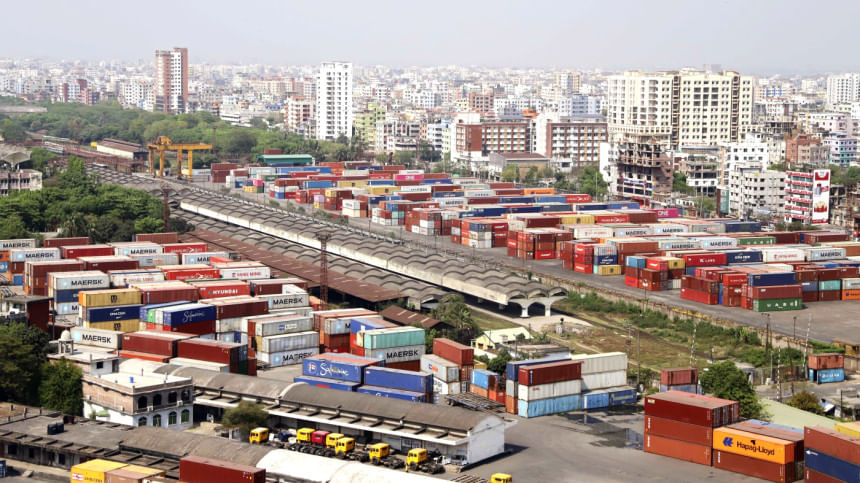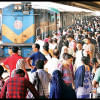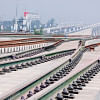Why Pubail makes more sense than Dhirashram for Dhaka’s next rail-based inland container depot

Dhaka's only rail-linked inland container depot (ICD) at Kamalapur was built in 1987, when the city was far smaller, trade volumes were limited, and containerised transport was only beginning to emerge. Four decades later, the situation has changed entirely. The depot now sits at the heart of one of the world's most crowded capitals, surrounded by traffic congestion, inadequate access roads, and virtually no room for expansion. Bangladesh Railway can operate only two container trains daily between Chattogram and Kamalapur due to capacity or path clearance limitations on the Tongi-Kamalapur line.
To address this, Bangladesh Railway has long planned to shift its container operations to a new ICD at Dhirashram, near Tongi. The project aims to handle 400,000 TEUs (20-foot equivalent units) of containers a year—five times Kamalapur's capacity—and to transform rail freight logistics for the capital. On paper, it seems ideal. In practice, however, Dhirashram comes with major challenges. To connect the site, a new seven-kilometre rail link must be built from Pubail, which alone requires costly engineering works and extensive land acquisition.
The project's cost is staggering: the government has already approved over Tk 3400 crore just for land and the new rail link, while the total estimate stands at $774.56 million under a public-private partnership model. Land prices in Gazipur, a dense industrial zone, continue to rise, and relocation issues are unavoidable. The Planning Commission itself has expressed concern that placing an ICD inside the Gazipur City Corporation area could worsen congestion and has advised exploring alternatives farther out, such as Kaliganj.
One alternative deserves renewed attention: Pubail. Located along the existing Dhaka-Chattogram rail line, the site offers the same strategic proximity to Dhaka without the associated congestion or cost burden. A few years ago, a group of railway officers, including myself, conducted a preliminary study in Bangla on the feasibility of developing an ICD adjacent to Pubail station. Although the report was never signed or formally submitted, its findings remain highly relevant. The railway already owns 10-15 acres of land near Pubail station. If another 90 acres were acquired, a 100-acre ICD could be developed at far lower cost and with less disruption than Dhirashram.
Pubail's road connectivity is another major advantage. It lies close to Mirer Bazar, which connects directly to the Dhaka Eastern Bypass (Middle Circular Road)—a newly opened expressway linking Joydebpur to Bhulta and Madanpur. This means container trucks could move between the ICD and the national highway network without entering Dhaka's core. Such seamless road-rail integration is critical to easing congestion and making the capital's logistics more efficient.
Additionally, land acquisition around Pubail would be simpler and cheaper, affecting fewer families and businesses, while the environmental footprint would be smaller. Compared with Dhirashram's 230-acre requirement, Pubail could operate effectively on about 100 acres, combining existing railway land with newly acquired plots. The financial savings from avoiding a new rail link and a massive urban land purchase could easily reach hundreds of crores of taka. Those funds could instead be invested in modern yard technology, which could also be implemented by the private operator.
A newly built port or ICD often takes considerable time to become fully operational due to user adaptation, operational learning, and market alignment. However, if Bangladesh Railway relocates the entire Kamalapur ICD setup—along with its existing businesses and handling ecosystem—to Pubail, the transition would be far smoother. This approach would minimise the usual start-up challenges, preserve the existing customer network, and reduce financial strain by leveraging established operational experience.
Critics may argue that Dhirashram is too advanced a project to reconsider. Yet, after nearly two decades, it remains entangled in planning and site disputes—precisely because of its impractical location and high costs. Re-evaluating the plan now is not a delay; it is a chance to make a wiser, future-proof decision. A formal feasibility comparison between Dhirashram and Pubail would bring clarity and confidence to all stakeholders. Financiers such as the Asian Development Bank are more likely to support a project that is technically sound and socially responsible than one facing urban opposition later.
A Pubail ICD could be developed more efficiently and brought into operation faster than the Dhirashram project. With efficient yard planning, high-density stacking, and digital systems, even a smaller footprint could match Dhirashram's capacity. The site's location on the main line would allow direct train access, reducing both operational complexity and energy costs. Most importantly, it would prevent the creation of yet another congested logistics hub inside an urban area.
The lesson of Kamalapur is clear. The depot was built with the right intent but, in hindsight, in the wrong place as Dhaka's expansion has turned it from an asset into a constraint. Bangladesh cannot afford to repeat that mistake.
The time has come for the Ministry of Railways, the Planning Commission, and development partners to take a second look at Pubail through a transparent, evidence-based process. If technical and economic assessments confirm its viability, the government should move quickly to secure the land and begin development before urban expansion makes it too late. The logistics industry, too, has a role to play; shipping lines, freight forwarders, and exporters all stand to gain from a more efficient, rail-based ICD that is accessible and sustainable.
Dhaka's container logistics need a long-term solution, not another temporary fix. Pubail provides that possibility—a practical, forward-looking location that aligns with national transport priorities and urban realities. Choosing it would mean not just building another terminal but reshaping how Bangladesh handles trade for decades to come. The question is not whether we can afford to rethink the plan, but whether we can afford not to.
To put it briefly, the Pubail alternative makes better use of existing rail assets, demands less land, avoids city congestion, and promises lower costs. Above all, it aligns with the government's vision to move a larger share of containers by rail, cutting road traffic and emissions. Bangladesh cannot afford another infrastructure decision that becomes a long-term burden. As Dhaka expands and trade grows, site selection today will shape logistics for decades, and we must choose better and smarter, not just larger.
Ahamedul Karim Chowdhury is adjunct faculty at Bangladesh Maritime University and former head of inland container depot at Kamalapur and Pangaon Inland Contianer Terminal under Chittagong Port Authority.
Views expressed in this article are the author's own.
Follow The Daily Star Opinion on Facebook for the latest opinions, commentaries and analyses by experts and professionals. To contribute your article or letter to The Daily Star Opinion, see our guidelines for submission.

 For all latest news, follow The Daily Star's Google News channel.
For all latest news, follow The Daily Star's Google News channel. 










Comments